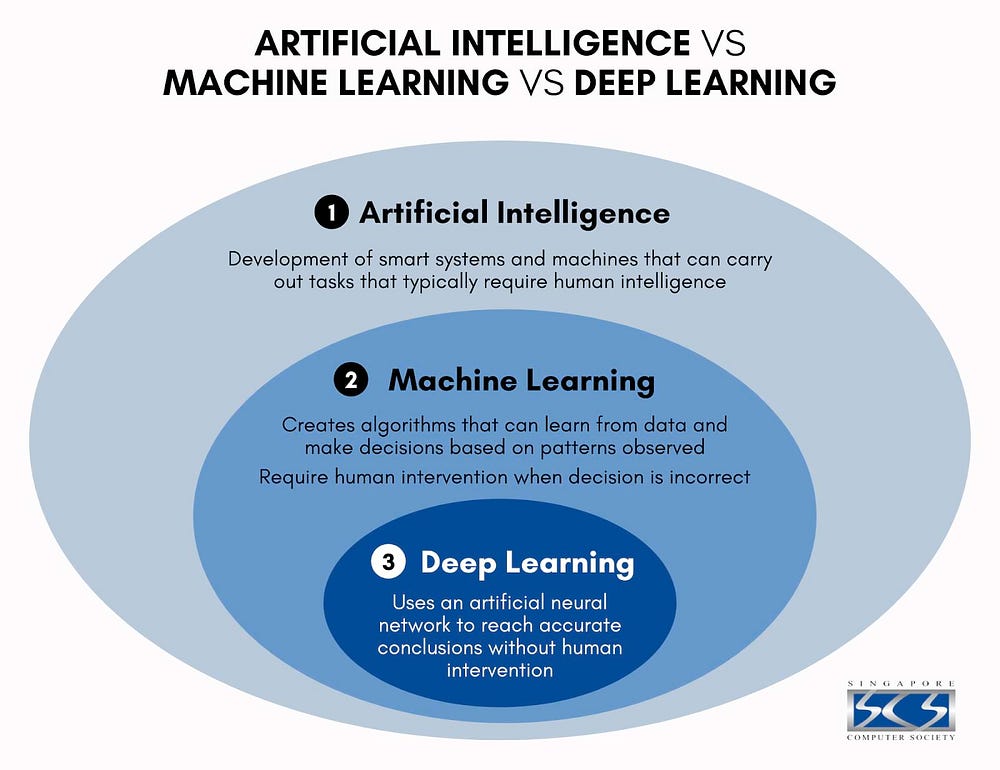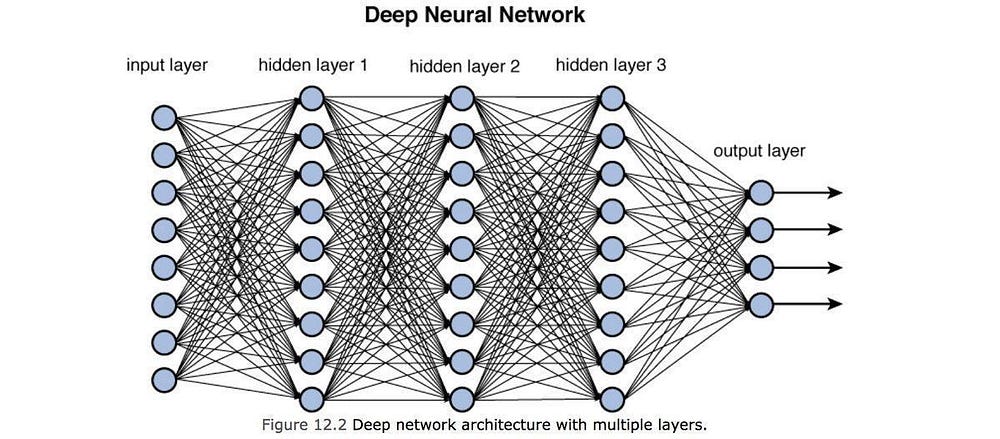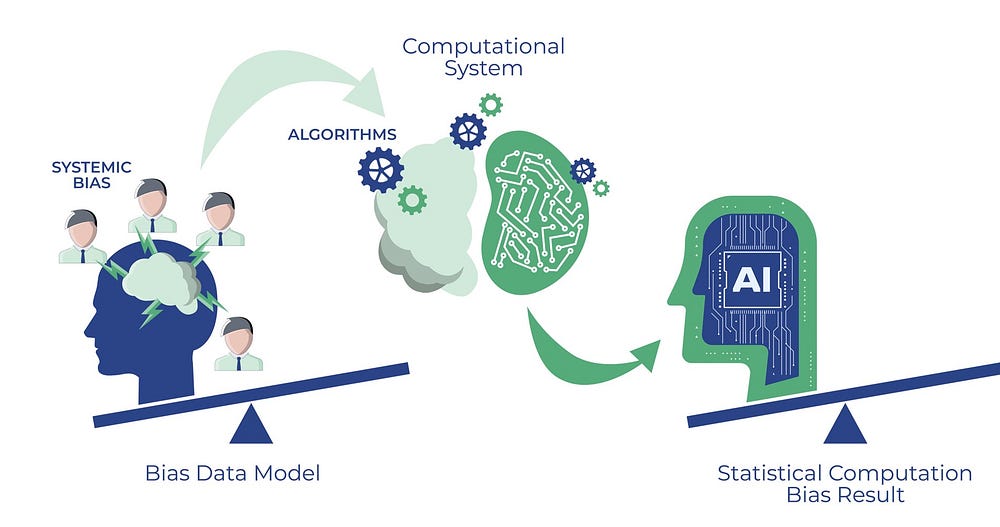A Comprehensive Understanding: What Is An AI Model

Introduction
In today’s digital age, the transformative power of artificial intelligence (AI), machine learning (ML), and deep learning (DL) models is reshaping industries and revolutionizing the way we interact with technology. These sophisticated algorithms and techniques have emerged as the cornerstone of innovation, driving advancements in areas such as image recognition, natural language processing, and predictive analytics.
With AI, ML, and DL models at the forefront of technological evolution, understanding their intricacies and capabilities is essential for organizations seeking to harness their full potential. In this guide, we delve into the fascinating world of AI, ML, and DL models, exploring their applications, differences, and strategies for development and optimization. From data privacy and bias mitigation to scalability and accuracy enhancement, join us on a journey to unlock the transformative possibilities of these groundbreaking technologies.
What Are AI Models?
AI models, or artificial intelligence models, are software programs designed to identify specific patterns within datasets. They represent systems capable of receiving data inputs, analyzing them, and then making decisions or taking actions based on the insights gained. Once these models are trained, they can be employed to make predictions about future data or to respond to previously unseen information. AI models find application in numerous domains, including image and video recognition, natural language processing (NLP), anomaly detection, recommendation systems, predictive modeling, forecasting, as well as robotics and control systems.
What Are ML or DL Models?
ML (Machine Learning) and DL (Deep Learning) models represent sophisticated approaches to processing and analyzing data to generate real-time predictions or decisions.
ML models: These utilize learning algorithms to derive insights or predictions from historical data. Examples include decision trees, random forests, gradient boosting, as well as linear and logistic regression. HPE provides a range of machine learning (ML) tools and technologies to facilitate the creation and utilization of ML models across different applications.
Deep learning (DL) models: A subset of ML models that leverage deep neural networks to learn from extensive datasets. DL models are commonly applied in tasks such as image and audio recognition, natural language processing, and predictive analytics, as they excel in handling complex and unstructured data. TensorFlow, PyTorch, and Caffe are among the deep learning (DL) tools and technologies offered by HPE to develop and deploy DL models effectively.
Both ML and DL models serve various business needs, including fraud detection, customer churn analysis, predictive maintenance, and recommendation systems. Organizations leverage these models to gain fresh insights from their data, empowering them to make informed decisions and drive innovation.
How to Differentiate between AI, ML, and DL

AI (Artificial Intelligence)
AI encompasses a broad array of techniques and tools designed to mimic human intelligence in machines.
It can be applied across diverse data types, including structured, unstructured, and semi-structured data. Due to their utilization of various methodologies and algorithms, AI systems can present challenges in terms of understanding and comprehension.

Given their potential involvement of more intricate algorithms and processing, AI systems may exhibit slower performance and lower efficacy compared to ML and DL systems. AI finds application in a wide spectrum of fields, such as natural language processing, computer vision, robotics, and decision-making systems. AI systems can operate either autonomously or require some degree of human intervention.
The development and management of AI systems often necessitate a sizable team of professionals due to their inherent complexity. As AI systems frequently incorporate complex algorithms and processing, scaling them can pose challenges. Due to their reliance on fixed methods and processing, AI systems might offer less flexibility than ML and DL systems. A drawback common to AI, ML, and DL is the substantial volume of data required for proper training.
ML (Machine Learning)
Machine learning, a subset of AI, involves training machines to learn from data and make predictions or decisions based on that data. ML techniques find application in areas such as image recognition, natural language processing, and anomaly detection.
ML relies on labeled training data for learning and prediction. Because ML models are built on statistical models and algorithms, they tend to be more comprehensible. Due to their reliance on statistical models and algorithms, ML systems have the potential to be faster and more efficient than AI systems.
ML shares many applications with AI but focuses more on data-driven learning. ML systems are designed to learn automatically from data with minimal human intervention. ML systems are often less complex than AI systems as they rely on statistical models and algorithms. As ML systems can be trained on large datasets using statistical models and algorithms, they have the potential to be more scalable than AI systems.
ML systems can adapt to new data and adjust their predictions or decisions, making them more flexible and adaptable than AI systems. The accuracy and robustness of an ML model can be influenced by the quality of the data, and the process of collecting and labeling data can be time-consuming and costly.

DL (Deep Learning)
Deep learning (DL) is a specialized subset of machine learning (ML) that emulates the functioning of the human brain through artificial neural networks. Complex tasks like image and speech recognition are areas where DL excels.

Efficient training of deep neural networks in DL necessitates large amounts of labeled data.DL models are sometimes perceived as “black boxes” due to their multiple layers of neurons, which can be challenging to interpret and understand. Since deep neural networks are trained using specialized hardware and parallel computing, DL systems have the potential to be the fastest and most effective among the three methods.
DL is particularly well-suited for tasks requiring intricate pattern recognition, such as image and audio recognition, as well as natural language processing. Human intervention is necessary in DL systems to determine the architecture and hyperparameters of the neural network.
DL systems can be the most complex due to their numerous layers of neurons and the requirement for specialized hardware and software for training deep neural networks. DL systems can be highly scalable as they leverage specialized hardware and parallel processing for training deep neural networks. Due to their capability to learn from vast datasets and adapt to new situations and tasks, DL systems have the potential to be the most adaptive.
Training deep neural networks in DL can be computationally intensive and require specialized equipment and software, which can be costly and limit accessibility to the technology.
How do AI models work?
AI models function by ingesting vast amounts of data and employing sophisticated techniques to identify existing trends and patterns within the provided dataset. Developed on programs that operate on large datasets, these models enable algorithms to discern correlations and patterns, facilitating the forecasting or formulation of strategies based on previously unknown data inputs. The process of intelligent and logical decision-making, which replicates the input of available data, is referred to as AI modeling.

In simpler terms, AI modeling involves three key steps:
- Modeling: The initial phase entails creating an artificial intelligence model, which utilizes complex algorithms or layers of algorithms to analyze data and make informed decisions based on that data. A proficient AI model can effectively substitute human expertise.
- AI model training: The second step involves training the AI model. This typically involves feeding extensive amounts of data through the model in iterative testing loops and verifying the accuracy and expected performance of the model. Understanding the distinction between supervised and unsupervised learning is crucial in this process:
- Supervised learning utilizes labeled datasets where data is categorized into correct outputs. The model utilizes this labeled data to identify connections and trends between input data and desired output.
- Unsupervised learning involves the model independently identifying connections and trends in the data without access to labeled data.
3. Inference: The final step, inference, entails deploying the AI model into real-life scenarios, where it continuously makes logical inferences based on the available information.
How do you fine-tune AI/ML models across GPU, compute, people, and data?
Scaling AI/ML models across GPU, compute resources, personnel, and data necessitates a blend of technology, infrastructure, and expertise.
GPU and Compute: Organizations can utilize high-performance computing solutions such as GPU-accelerated computing platforms and cloud-based services to scale AI/ML models. These solutions enable the efficient execution of complex algorithms without compromising performance.
Personnel: The scalability of AI and ML heavily relies on skilled individuals. Building, implementing, and managing AI/ML models at scale requires a team of highly qualified specialists. Understanding the organization’s AI/ML objectives, capabilities, and resources is crucial for successful execution.
Data: A robust data architecture is essential for supporting the scalability of AI/ML models. Since data serves as the foundation for these models, organizations need a well-designed data management strategy. This strategy should enable the storage, processing, and analysis of large volumes of data in real-time while ensuring its reliability, accuracy, and security.
By harnessing these capabilities, organizations can propel the growth and success of their AI/ML initiatives, maintaining a competitive edge in the digital era.
How do you build and train AI models?
To construct and train AI models, the initial step is to establish the purpose and define the objectives of the model. Subsequent actions are determined by the intended function of the model.
Collaborate with subject-matter experts to evaluate the quality of the data. A comprehensive understanding of the collected data is essential, ensuring that the data inputs are accurate and error-free. These data will serve as the foundation for training the model, requiring accuracy, consistency, and relevance to the AI’s intended purpose.
Select the appropriate AI algorithm or model design, such as decision trees, support vector machines, or other prevalent techniques used for training AI models.
Utilize the cleaned and prepared data to train the model. This process typically involves feeding the input into the chosen algorithm and employing techniques like backpropagation to adjust the model’s settings and enhance efficiency.
Verify the accuracy of the trained model and address any necessary corrections. This may involve testing the model on a separate dataset and evaluating its ability to predict actual outcomes.
Once the model achieves the desired level of accuracy, fine-tune it and repeat the training process. This could entail adjusting the model’s hyperparameters, such as the learning rate, or implementing techniques like regularization to prevent overfitting.
Overall, developing and training an AI model requires a blend of domain expertise, familiarity with machine learning algorithms and techniques, and a willingness to experiment and iterate to improve the model’s performance.
What is data bias in AI models?
Data bias in AI models refers to the likelihood of systematic and unfair biases present in the training data. When the data used to train a model contains biased inputs or is not representative of the target audience, it can lead to inaccurate or unjust predictions. This can result in the model treating certain individuals unfairly and discriminatively.

To mitigate data bias, it is crucial to ensure the training dataset is broad and representative of the sample or audience to which the model will be applied. Additionally, enabling AI models to leverage learnings from diverse datasets can help reduce bias and enhance model accuracy.
How to ensure data privacy in AI/ML models
In AI/ML models, ensuring data privacy is a critical priority, and various technologies and best practices help achieve this goal.
Data Encryption
Encrypting data is essential to protect privacy in AI/ML models. Businesses require encryption solutions to secure sensitive data both during transmission and when stored.
Data Anonymization
Data anonymization involves removing personally identifiable information (PII) from datasets while still providing AI/ML models with necessary information. Businesses need solutions that balance data protection with model functionality.
Access Control
Access control solutions enable businesses to manage access to sensitive data, ensuring that only authorized individuals can access it.
Compliance
Maintaining data privacy in AI/ML models necessitates adherence to compliance regulations such as the GDPR and CCPA. Businesses require products that align with compliance best practices to uphold legal requirements.
Auditing and Logging
Auditing and logging solutions allow organizations to monitor access to sensitive data, quickly detecting and addressing any potential breaches.
By leveraging data privacy-compliant solutions and best practices, organizations can safeguard sensitive data, maintain customer and stakeholder trust, and uphold security standards.
How to enhance accuracy in AI/ML models?
Improving accuracy in AI/ML models is a critical concern, and there are several strategies and best practices that can be used to achieve this goal.
Data Quality
- Data quality is a critical factor in the accuracy of AI/ML models. Solutions for data quality management can ensure that data sets are complete, accurate, and consistent. This allows AI/ML models to learn from high-quality data and make more accurate predictions. Data quality management includes:
- Data cleansing: the process of removing inconsistencies, duplicates, and errors from data sets.
- Data standardization: the process of converting data into a common format.
- Data enrichment: the process of adding additional data to a data set.
- Data validation: the process of checking data for accuracy and completeness.
- Data governance: the process of managing data quality, security, and privacy.
Feature Engineering
Engineering features are the process of turning raw data into features that AI/ML models can employ. Data visualization, feature selection, dimensionality reduction, feature scaling, and feature extraction are all effective feature engineering approaches that may dramatically increase model accuracy.
Model Selection
Choosing the best AI/ML model for a specific task is essential for improving accuracy. There are several models to pick from, such as decision trees, logistic regression, linear regression, and deep learning models. It is crucial to pick a model with a high accuracy rate that is suitable for the issue at hand.
Hyperparameter Tuning
Hyperparameters are settings made before an AI/ML model’s training. The accuracy of the model can be significantly impacted by the selection of hyperparameters. Organizations can automatically tune hyperparameters using HPE’s hyperparameter tuning solutions, improving model accuracy.
Model Regularization
Model regularization is the process of decreasing overfitting in AI/ML models. Overfitting is a condition when a model performs poorly on fresh data because it is too complicated and fits the training data too well. L1 and L2 regularization are two model regularization methods that can aid in reducing overfitting and enhancing model accuracy.
Model Validation
Organizations can evaluate the correctness of their models and spot any possible problems with the help of tools and best practices for model validation.
Conclusion
In the vast landscape of AI, ML, and DL models, we find not just technological prowess, but also boundless opportunities for innovation and societal progress. As we journey through the intricacies of these transformative technologies, let us be inspired by the potential they hold to tackle some of humanity’s most pressing challenges. By harnessing the power of AI and ML responsibly, with a steadfast commitment to ethical use and inclusive development, we can pave the way for a future where technology serves as a force for good. Let us embrace the possibilities, empower diverse voices, and work together to build a world where innovation knows no bounds and every individual can thrive. With AI, ML, and DL models as our guiding lights, the future is bright, and the possibilities are endless.
novita.ai, the one-stop platform for limitless creativity that gives you access to 100+ APIs. From image generation and language processing to audio enhancement and video manipulation,cheap pay-as-you-go , it frees you from GPU maintenance hassles while building your own products. Try it for free.
Recommended reading
What is the difference between LLM and GPT
LLM Leaderboard 2024 Predictions Revealed
Novita AI LLM Inference Engine: the largest throughput and cheapest inference available